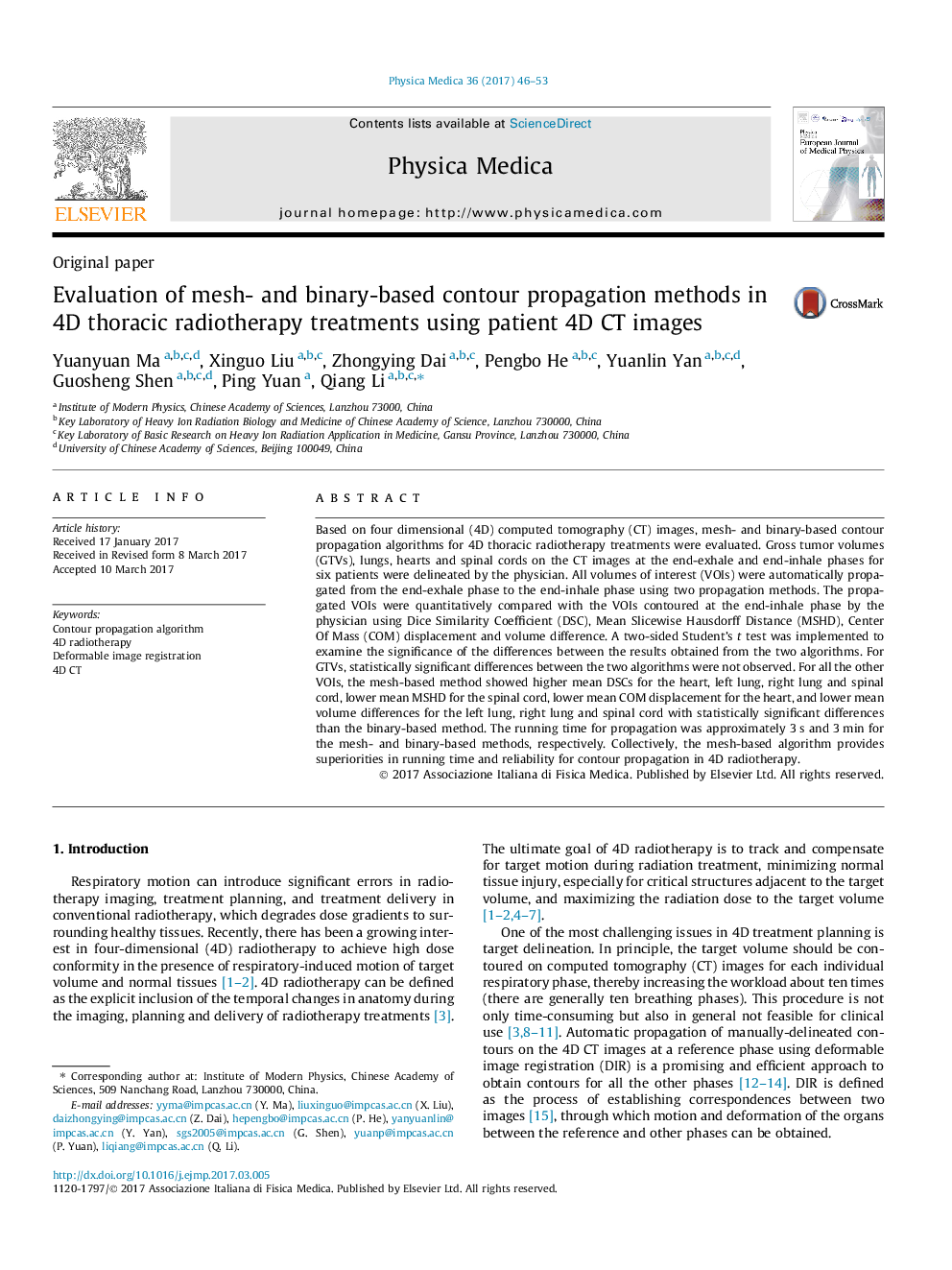| Article ID | Journal | Published Year | Pages | File Type |
|---|---|---|---|---|
| 5498537 | Physica Medica | 2017 | 8 Pages |
Abstract
Based on four dimensional (4D) computed tomography (CT) images, mesh- and binary-based contour propagation algorithms for 4D thoracic radiotherapy treatments were evaluated. Gross tumor volumes (GTVs), lungs, hearts and spinal cords on the CT images at the end-exhale and end-inhale phases for six patients were delineated by the physician. All volumes of interest (VOIs) were automatically propagated from the end-exhale phase to the end-inhale phase using two propagation methods. The propagated VOIs were quantitatively compared with the VOIs contoured at the end-inhale phase by the physician using Dice Similarity Coefficient (DSC), Mean Slicewise Hausdorff Distance (MSHD), Center Of Mass (COM) displacement and volume difference. A two-sided Student's t test was implemented to examine the significance of the differences between the results obtained from the two algorithms. For GTVs, statistically significant differences between the two algorithms were not observed. For all the other VOIs, the mesh-based method showed higher mean DSCs for the heart, left lung, right lung and spinal cord, lower mean MSHD for the spinal cord, lower mean COM displacement for the heart, and lower mean volume differences for the left lung, right lung and spinal cord with statistically significant differences than the binary-based method. The running time for propagation was approximately 3Â s and 3Â min for the mesh- and binary-based methods, respectively. Collectively, the mesh-based algorithm provides superiorities in running time and reliability for contour propagation in 4D radiotherapy.
Related Topics
Physical Sciences and Engineering
Physics and Astronomy
Radiation
Authors
Yuanyuan Ma, Xinguo Liu, Zhongying Dai, Pengbo He, Yuanlin Yan, Guosheng Shen, Ping Yuan, Qiang Li,
